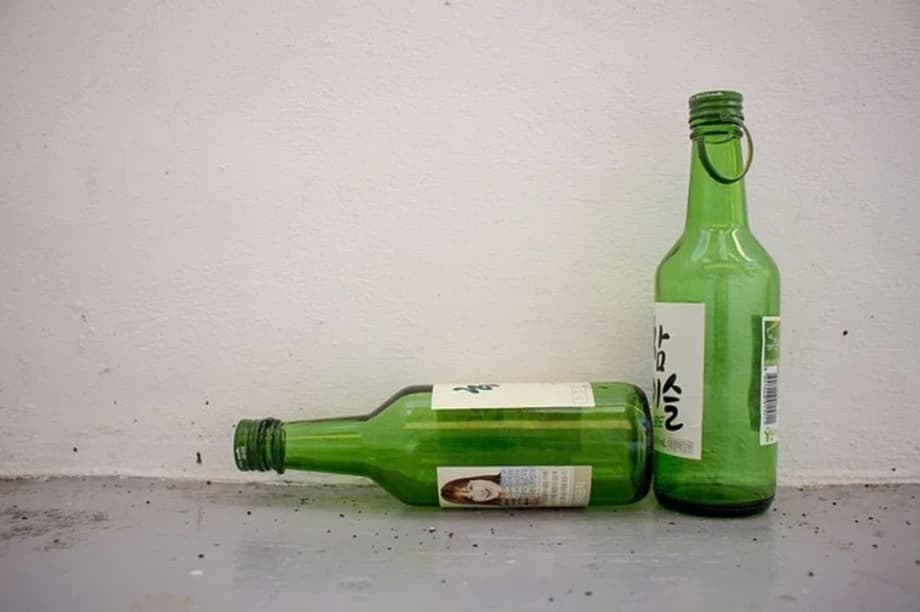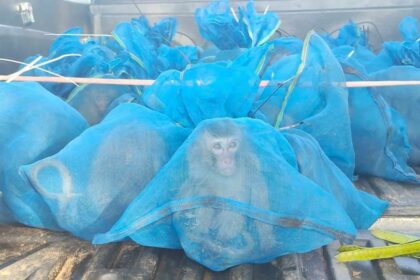Bigger, clearer alcohol warnings are coming in 2026
South Korea will require larger, more legible health warnings on all alcoholic beverage packaging starting in September 2026. The Ministry of Health and Welfare has set new minimum font sizes that scale with container volume, and it will require warnings to contrast clearly with the background so they are easy to spot. Containers that have text and graphics printed directly on the surface, such as cans, must use even larger type to make sure warnings do not get lost in the design. The ministry is also collecting public and expert feedback on the proposed changes until Jan 13.
- Bigger, clearer alcohol warnings are coming in 2026
- What exactly will change on bottles and cans
- Why South Korea is tightening labels now
- Will cancer and drunk driving warnings be part of the new labels
- How Korea compares with other countries
- What the research says about warning labels
- Industry pushback and the legal landscape
- What importers and retailers need to do
- What consumers will see on shelves
- Timeline and what happens next
- Key Points
The shift marks a clear break from the country’s earlier standards. Under the current rules, the smallest labels can use type as small as 7 point for containers under 300 milliliters and 9 point for 300 milliliters and above. From 2026, those minimums will rise across the board, and printed cans will step up by an extra two points compared with similarly sized bottles with separate labels. The result is that messages about health risks and safety will be much harder to overlook on store shelves and in bars.
Officials say the goal is straightforward: make warnings readable at a glance. Larger text and stronger contrast should help consumers take in key information, whether the message is cautioning against underage drinking, alerting pregnant customers to risks for the fetus, or addressing broader health harms associated with alcohol. These changes come as South Korea refines several parts of alcohol policy, including new requirements that will put warnings about drunk driving on packaging after a grace period following legislative approval.
What exactly will change on bottles and cans
The new standard ties minimum font size to container capacity. It also sets a higher bar for legibility on surfaces where the design is printed directly onto the package.
Minimum font sizes by container
The revised rules specify these minimums for health warnings:
- Up to and including 300 ml: at least 10 point type, about 3.53 mm in height
- 301 ml to 500 ml: at least 12 point type, about 4.23 mm
- 501 ml to 1 liter: at least 16 point type, about 5.6 mm
- Over 1 liter: at least 18 point type, about 6.35 mm
For any container without a separate label, such as a can with text printed directly on the metal, the warning must be set two points larger than the standard for that size. For example, a 300 ml beer can should print the warning in at least 12 point type instead of 10 point.
Color and contrast
Warnings will need to stand out from background colors. Designers will be expected to use contrasting colors that keep the message readable across different package designs and finishes. The aim is to prevent warnings from blending into branding or textured backgrounds.
How this differs from current rules
Today’s standards allow 7 point type for containers under 300 ml and 9 point for 300 ml or larger, without the extra requirement for printed cans. The 2026 shift will increase those minimums by several points, and it adds a clear contrast rule that can be applied consistently across products.
Why South Korea is tightening labels now
Alcohol is a known carcinogen. The World Health Organization classified it as carcinogenic to humans in 1988, and recent guidance has reinforced that no safe amount of alcohol consumption can be established for cancer risk. Drinking is linked to cancers of the liver, breast, colon and rectum, esophagus, mouth, throat and larynx. Alcohol also contributes to injuries, liver disease, and other chronic conditions that strain health systems.
South Korea has a vibrant drinking culture, and alcohol has long been woven into social and corporate life. Authorities have tried various measures to reduce harm, from public awareness campaigns to enforcement efforts against dangerous behavior. Drunk driving remains a serious issue. Data from the Korea Road Traffic Authority show that between 2019 and 2023, 1,167 people were killed and 122,566 were injured in incidents linked to drunk driving. Regulators see clearer warnings as part of a wider approach that includes education, enforcement, and healthcare support.
Public awareness is another concern. Surveys in many countries show that a large share of people do not connect drinking with cancer risk, and many underestimate how much harm can arise from what they consider moderate intake. Larger labels are intended to reach people at the point of purchase and consumption, where information can prompt reflection and conversation.
Will cancer and drunk driving warnings be part of the new labels
South Korea already requires alcohol containers to carry one of a set of approved warning statements. Since 2016, that set has included a message that links alcohol to liver cancer, a rare step internationally. Manufacturers can choose from several statements, which means not every product includes the cancer warning, but the option is in the official roster.
Separately, lawmakers have approved revisions to the National Health Promotion Act that will require warnings about drunk driving on alcohol packaging after a one year grace period following proclamation. Health officials have indicated that these messages could include graphics to convey risk more forcefully. The newly announced font standards will apply to any required warnings, including drunk driving messages, so they will be larger and easier to see.
Taken together, these moves point to a broader public health effort: larger text, stronger contrast, and content that addresses cancer, pregnancy risks, and road safety. Final wording and design details sit with the relevant regulations, but the direction is clear. Consumers should expect more prominent cautions on bottles and cans.
How Korea compares with other countries
Very few countries require alcohol packaging to warn about cancer. South Korea stands out because its official set of labels includes a liver cancer warning. Ireland will take another major step in 2026, when all alcohol sold there must carry warnings that state a direct link between alcohol consumption and fatal cancers, alongside messages about liver disease and pregnancy risk. Other governments are moving or debating changes: some in Europe are reviewing label formats, Norway has considered adding cancer messages to a highly regulated market, and Thailand has discussed graphic labels that combine images and text.
Outside Asia and Europe, momentum is visible as well. In the United States, a national advisory has called for updated labels that address cancer. One state, Alaska, has enacted a requirement for bars and liquor stores to display signs that warn about the link between alcohol and specific cancers. The United Kingdom is exploring mandatory health warnings and nutrition information for alcoholic drinks, responding to the social and medical costs that alcohol imposes each year.
International health agencies have urged sharper labeling. A recent report from the World Health Organization’s European office highlighted how few consumers know about the alcohol cancer link, and it recommended mandatory labels that are easy to see. The report also noted that QR codes alone are not a substitute for on pack warnings. In a pilot test cited by the report, fewer than one in 300 shoppers scanned codes to find health information. That figure underscores the value of visible text on the container itself.
What the research says about warning labels
Research on alcohol warning labels points to clear gains in awareness and some evidence of behavior change. Studies have found that labels can increase knowledge of cancer risk and prompt discussions within families and social groups. In real world trials, stores that placed sharp warnings on products recorded reduced alcohol sales compared with stores that did not. Other evaluations show mixed results, often because labels are small, hard to read, or lack specific health information. Design matters. Labels that are larger, use clear language, rotate messages, and include strong icons tend to perform better.
Public health researchers note that many current alcohol labels are vague. Phrases such as drink responsibly do little to inform people about actual risks. By contrast, warnings that name health outcomes, such as specific cancers or liver disease, help people understand why the warning exists. The World Health Organization and national health bodies recommend that labels be conspicuous, in plain language, and supported by wider education. That is where South Korea’s new size and contrast standards fit in. They raise the odds that people will notice and read what the warning says.
Another consistent finding is that awareness of the alcohol cancer link starts low in many populations. When people learn that alcohol can cause breast or colon cancer, they often say it is new information. That knowledge can influence choices about when and how much to drink. It can also increase support for other policies, such as limits on marketing and measures to reduce harmful drinking.
Industry pushback and the legal landscape
Alcohol producers and trade groups have often challenged stronger warning labels. Their arguments range from cost and design constraints to claims about free expression and international trade rules. These positions have had an impact in some cases. In one country, a strong set of alcohol warnings approved in law was later repealed after pressure from domestic and international interests. In another, a government backed study that tested cancer warnings in retail stores was paused after industry complaints, even though early findings showed increased awareness and signals of reduced sales.
Legal analyses by public health scholars conclude that governments have clear authority to require warnings on alcohol, much as they do for tobacco and food. Courts have recognized the role of labels in informing consumers about health risks. Policymakers are increasingly drawing on that record. Where rules are crafted with clear public health objectives, consistent formats, and reasonable lead times for compliance, they tend to be durable.
Design flexibility is another point of discussion. Producers often note that they update labels for seasonal promotions and sports tie ins, which shows that technical updates are feasible. The new South Korean rules give manufacturers more than a year to prepare, and they specify minimums rather than dictating a single layout. That approach leaves room for branding while setting a floor for readability.
What importers and retailers need to do
Importers face specific compliance steps in Korea. All imported alcoholic beverages must carry a Korean language label, typically applied by the importer before customs clearance. Required details include the product name, country of origin, product type, importer name and license number, alcohol content and volume, a lot number or bottling date, additives when present, storage instructions, and a government warning against sale to minors. One of several official health warning statements in Korean must be included. Some categories may also require a radio frequency identification tag.
With the 2026 rule, importers and local producers will need to make sure the health warning meets the new font sizes by container size. Cans and other direct print packages should plan for the extra two point requirement. Contrast rules mean labels printed in similar tones to the background will need color adjustments. For products with multiple package sizes, design teams will likely create templates that scale the warning text and maintain high contrast across formats.
Customs and food safety checks will continue as usual. Importers must submit invoices, shipping documents, ingredient lists with percentages, and other paperwork to the Korea Customs Service and the Ministry of Food and Drug Safety. First time imports may undergo chemical safety testing. Retailers should expect a transition period during which older stock phases out and redesigned packages appear on shelves as producers meet the new standards.
What consumers will see on shelves
Shoppers and diners can expect alcohol warnings that are easier to notice. Text will be larger across the full range of bottles and cans, and the contrast rule should reduce the chance that warnings blend into design elements. On cans and other direct print packages, the text will be larger still, since those packages must use a size that is two points bigger than the standard for the same capacity.
Warning content will continue to address several risks. Messages can include the dangers of drinking during pregnancy, the legal and health consequences of underage drinking, and the health harms of alcohol. With the recent legislative change, packaging will also need to carry warnings about drunk driving after a one year grace period following proclamation. In the set of approved messages, South Korea retains a cancer related warning, and the new visibility standards increase the chance that consumers will see it where it is used.
For people considering how alcohol affects health, the medical picture has shifted in recent years. Health authorities say there is no safe amount of alcohol for cancer risk. The list of cancers linked to drinking includes breast, colorectal, liver, esophageal, laryngeal, throat, and oral cancers. That does not mean every drink will cause harm, but it does mean that risk rises as consumption increases. Labels that are clear and visible can help people make choices that align with their own risk tolerance and health goals.
Timeline and what happens next
The Ministry of Health and Welfare has opened a window for public and expert input on the label revisions until Jan 13. After feedback is reviewed and final language is set, the larger label standards will take effect in September 2026. Producers and importers should plan artwork updates, color checks for contrast, and quality control testing so new labels print cleanly and remain legible on curved surfaces and under different lighting. Legislated drunk driving warnings on packaging will take effect one year after proclamation, giving the market time to conform.
Consumers will likely see redesigned packages appear ahead of the deadline as large producers run down old inventories and switch over. Smaller producers may move closer to the effective date, depending on production schedules. Once in place, the bigger, clearer warnings will become a standard part of the shopping and dining experience in South Korea.
Key Points
- New rules require larger alcohol health warnings from September 2026, with minimum font sizes tied to container volume and a strict color contrast requirement.
- Cans and other direct print packages must use warning text two points larger than the standard for the same capacity.
- Current minimums of 7 point and 9 point will be replaced by 10, 12, 16, and 18 point thresholds depending on size, a significant increase in legibility.
- Public and expert feedback on the proposed revisions is open until Jan 13.
- South Korea’s approved set of warnings includes a message linking alcohol to liver cancer, a rare feature internationally.
- A legislated change will add drunk driving warnings to alcohol packaging after a one year grace period following proclamation.
- Global momentum is growing on alcohol labeling, with Ireland set to require explicit cancer warnings in 2026 and other countries considering stronger labels.
- Research indicates that larger, clearer warnings increase awareness of health risks and can reduce alcohol sales in real world settings.
- Importers must ensure Korean language labels meet the new font and contrast standards, with routine customs and safety checks continuing.
- Shoppers will see bigger warnings on bottles and cans, including more prominent messages about pregnancy, underage drinking, cancer risk, and drunk driving.












